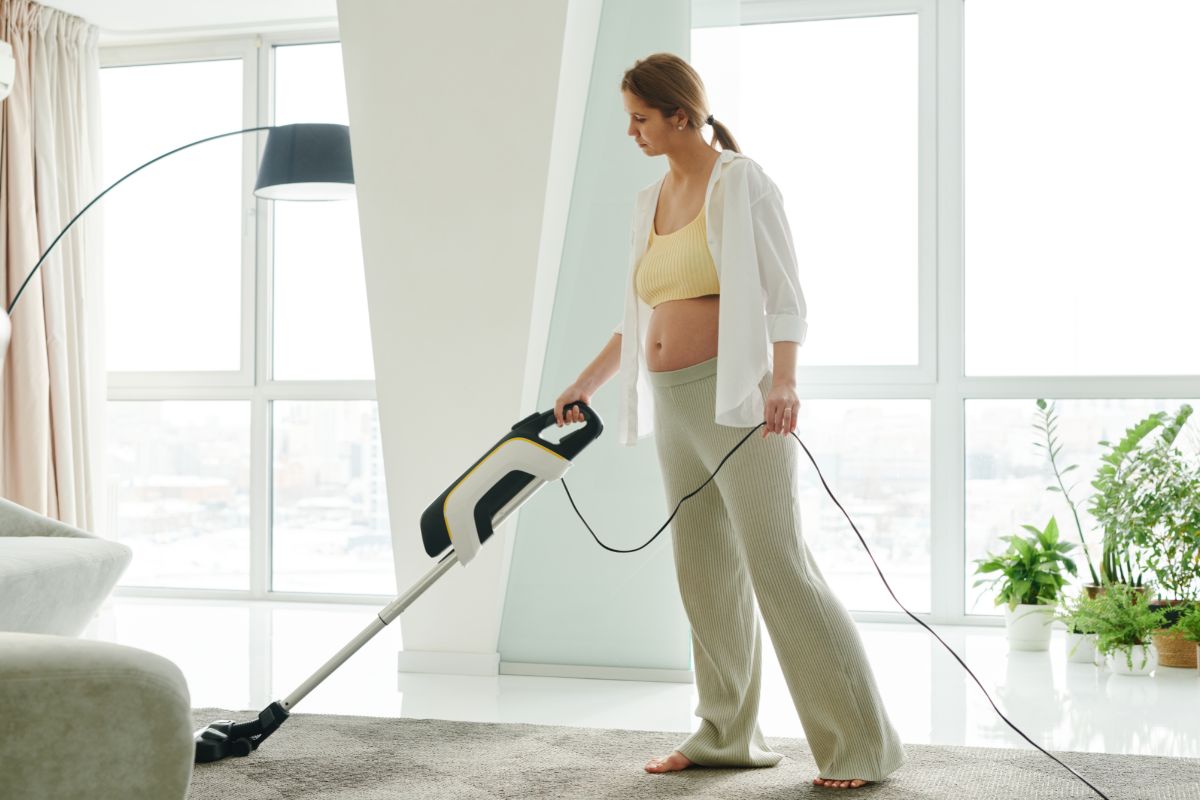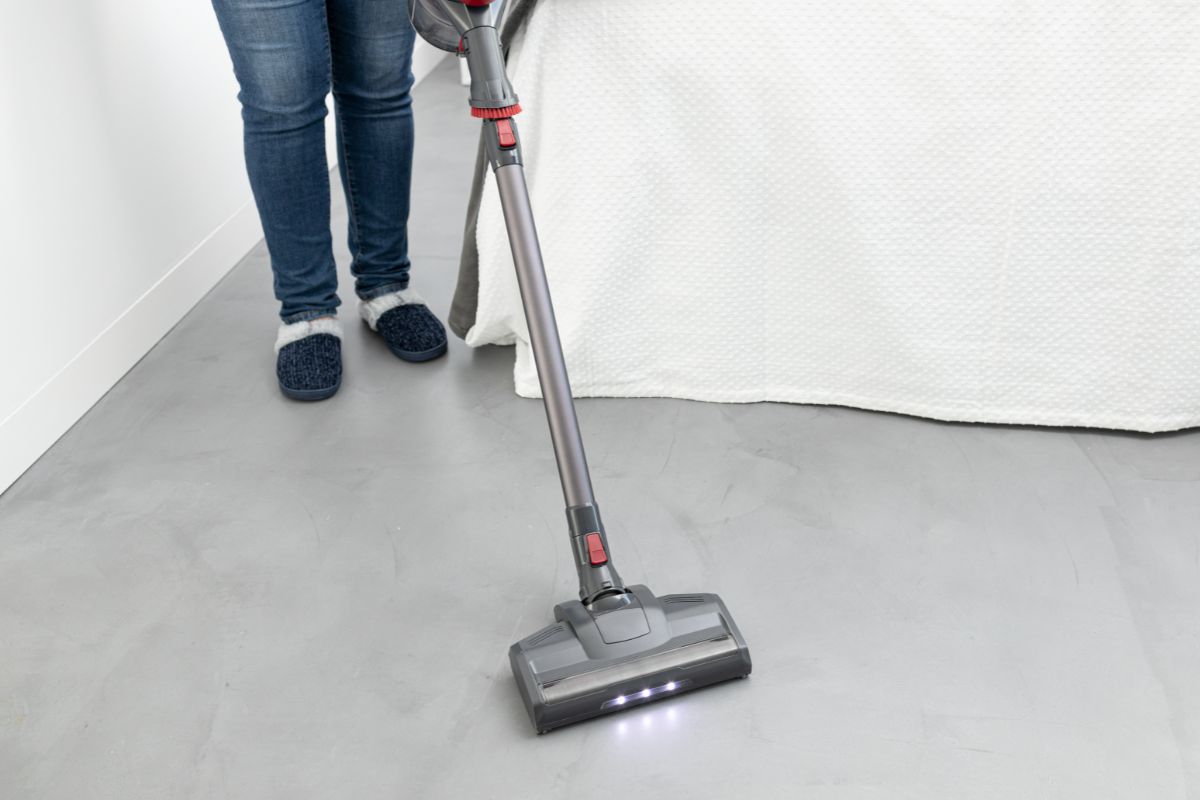Let’s answer a common question about vacuum charging.
It’s surprising how quickly the desire to clean fades when you reach for your vacuum, only to discover the battery is at zero percent.
By the time you have it up and running, cleaning might be at the very back of your mind.
It’s the biggest downfall of the otherwise incredibly convenient cordless stick vacuum.
If you can leave the vacuum charging all the time, then you never have to worry about dead batteries.
However, many of us are used to older batteries that overheat and degrade with excessive charging. So, we unplug the vacuum, and forget about it until the next clean.
Most modern cordless stick vacuums are designed for constant charging, ready to go whenever needed. Learn more about 24/7 charging here.
Can You Leave A Cordless Vacuum Charging 24/7?
It is safe to leave most cordless stick vacuums charging 24/7 without damaging the health of the battery or draining power.
However, some older models might not be safe to leave charging, so always check the advice given by the manufacturer.
Discovering your vacuum has no charge is disheartening, especially if you have a big mess that needs some urgent attention.
If the vacuum can be kept charging at all times, then you never have to worry about low battery warnings halfway through doing the carpet.
That’s why vacuum manufacturers are working to constantly improve the battery, allowing it to stay on charge without receiving damage.
Many modern cordless vacuum cleaners are intended to stay charging all the time without the battery degrading. This way, they fit better into busy lives.
Should You Leave Your Stick Vacuum Charging 24/7?
While you can leave most stick vacuums charging all the time, you might be wondering if that’s the right thing to do.
Many manufacturers recommend leaving your vacuum on charge, so that it’s always ready to go when you need it.
But older models will often need to be taken off charge when the battery is full, to prevent overheating.
If you prefer to clean whenever the moment feels right, then you probably want to invest in a stick vacuum that allows you to keep it on charge.
This won’t damage the battery, and as it’s always ready to go, you can clean efficiently.
But if you prefer to clean on a schedule, and never forget to charge, then you might not see the reason for the 24/7 charging.
However, protected batteries not only don’t receive damage, they also shouldn’t waste power.
You can leave your vacuum charging without worrying about the impact. That said, if you prefer to unplug, this shouldn’t damage the battery either.
Can You Plug And Unplug Your Stick Vacuum?
If you can remember to do it, then it’s perfectly safe to charge your cordless vacuum to 100% and then disconnect it from the power.
This shouldn’t lead to extra damage, and might even extend the life of your battery.
We recommend starting the charge a couple of hours in advance of using the vacuum, so you have a guaranteed full charge when it’s time to tackle the floors.
Can You Overcharge A Stick Vacuum Battery?

For the most part, it isn’t possible to overcharge the battery on a stick vacuum. However, this only applies to modern batteries from quality brands.
If you have an older model of cordless vacuum, it might be better to take it off charge when the battery is ready.
Overcharging is when power continues to enter a battery cell after it’s already full. This can damage the battery, as it causes the components to deteriorate.
With too much overcharging, the capacity of the battery will degrade, and it will eventually stop taking a charge altogether.
Some brands, such as Dyson, have installed batteries that avoid overcharging. These use a protection trigger that stops the batteries from accepting any more charge.
This prevents the battery from degrading, and from overheating. Older models, on the other hand, won’t have this in-built protection.
Modern lithium-ion batteries are safer, but older nickel batteries do suffer from overcharging.
Can Vacuum Charging 24/7 Cause It To Overheat?
Thanks to the trigger mechanisms designed to prevent overcharging, cordless vacuum cleaners shouldn’t overheat when charging if they have a lithium-ion battery.
If you have an older nickel battery, then this is likely to heat up as it can’t stop receiving power. These should be unplugged when they’ve reached their charge.
If you think your lithium battery is overheating when left on charge, then unplug it immediately and give it a chance to cool down.
If this happens frequently, contact a technician to discover the cause of the problem.
Overheating can be dangerous, particularly if you’ve stored your vacuum in a crowded closet.
Tips For Extending The Life Of Your Battery
Technological advances have made batteries last longer than ever, but they will eventually degrade.
In time, you might find your vacuum charges slower, runs out of power faster, and eventually stops charging altogether. To slow the degradation, there are a few things you can do.
- Allow the battery to run down occasionally. At least once a month, let the battery discharge completely before charging back up again. This should help extend the life of the battery, and keep the performance level high.
- Let the machine cool down before charging again. At the end of a good clean, the vacuum is likely to feel heated. Before you put it back to charge, let it cool down to an ambient temperature.
- Keep the vacuum and battery stored at room temperature. Excess heat can damage the battery, so it’s important to think carefully about storage. Don’t store the vacuum next to radiators, or in boiler cupboards. It’s also best to choose a storage solution away from direct sunlight.
- Don’t use the vacuum on very hot days. Again, extreme temperature is an issue. Avoid using the vacuum when the temperatures are soaring, particularly if you plan on cleaning the car. Similarly, avoid using the vacuum in extreme cold. Don’t vacuum the porch or garage when it’s freezing.
- Only use high-powered modes when absolutely necessary. Boost or max modes are common settings on vacuum cleaners, packing in extra power when dealing with stubborn mess. However, these modes put excess strain on the battery, and cause it to wear down quicker. Use the normal or eco-mode (if available) as much as possible, and only turn up the power when you really need it.
- Use the vacuum properly. Vacuuming the wrong surfaces and failing to clean the dust cup are two examples of improper use that can damage how the machine runs.
Replacing The Battery
Even with proper care, you’ll eventually notice that your vacuum is lacking the performance it once had.
When this happens, consider changing the battery, rather than the model.
Replacement batteries can be purchased for all the major brands, and they’re cheaper (and better for the environment), than buying from new.
Final Thoughts
Most modern cordless vacuums are designed to remain on charge 24/7. This is so that your vacuum is always ready when you want to clean.
Clever trigger technology prevents the batteries from overcharging, for a safe and effective charge.
But if you have an older model, you might need to unplug when the battery is full.

